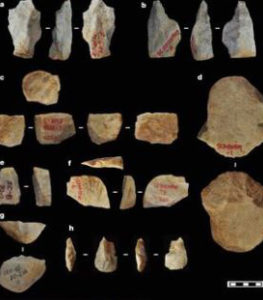Human migration began earlier than we thought – archaeological study finds
Human migration out of Africa began more than two million years ago – much earlier than previously thought – according to analyses of ancient tools and bones recently discovered in Chin a.
a.
Artefacts found by archaeologists on the Loess Plateau in southern China show that humans colonised East Asia between 1.12 and 1.2 million years ago.
They were found by a team led by Professor Robin Dennell of the UK’s Exeter University and Professor Zhaoyu Zhu of the Chinese Academy of Sciences.
The tools were discovered at a locality called Shangchen and the oldest are around 2.12 million years old – about 270,000 years older than the 1.85 million year old skeletal remains and stone tools found at Dmanisi, Georgia, which were previously the earliest evidence of humanity outside Africa.
The artefacts include a notch, scrapers, cobble, hammer stones and pointed pieces. All show signs of use and the stone had been intentionally flaked.
Most were made of quartzite and quartz that probably came from the foothills of the Qinling Mountains 5 to 10 kilometres south of the site, and the streams flowing from them, according to a statement released by the archaeological team.
Fragments of animal bones 2.12 million years old were also found.
The Chinese Loess Plateau covers about 270,000 square kilometres, and during the past 2.6m years between 100 and 300m of wind-blown dust – known as loess – has been deposited in the area.
The 80 stone artefacts were found in 11 different layers of fossil soils which developed in a warm and wet climate.
A further 16 items were found in six layers of loess that developed under colder and drier conditions. These 17 different layers of loess and fossil soils were formed during a period spanning almost a million years.
The archaeological team says this shows that early types of humans occupied the Chinese Loess Plateau under different climatic conditions between 1.2 and 2.12 million years ago.
The layers containing these stone tools were dated by linking the magnetic properties of the layers to known and dated changes in the earth’s magnetic field.
Professor Dennell said the discovery changed what is known about the first human migration.
“Our discovery means it is necessary now to reconsider the timing of when early humans left Africa,” he said.
The research has been published in the journal Nature.
Photos: Professor Zhaoyu Zhu
Laurie Nowell
Senior Journalist












